Table of Contents
The Harmony of Bill Evans (Part 1)
Browse in the Library:
| Artist or Composer / Score name | Cover | List of Contents |
|---|---|---|
| A dozen A Day Book 1 Technical exercises for the piano |
 |
A dozen A Day Book 1 Technical exercises for the piano |
| A dozen A Day Book 2 Technical exercises for the piano |
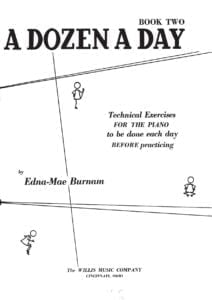 |
|
| A dozen A Day Book 3 Technical exercises for the piano |
 |
|
| A dozen A Day Book 4 Technical exercises for the piano |
 |
|
| A dozen A Day Mini Book Technical exercises for the piano |
 |
|
| A dozen Day Preparatory Book Technical exercises for the piano |
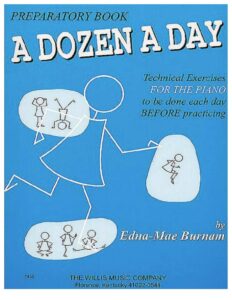 |
|
| A Farewell To Arms Love Theme From A Farewell To Arms film by Mario Nascimbene Francis Webster 1957 |
 |
|
| A Felicidade (Antonio Carlos Jobim) | ||
| A Festival Gathering Of Carols (Musescore File).mscz | ||
| A Fine Frenzy – Almost Lover |
 |
|
| A Fistful of Dollars (Ennio Morricone) | ||
| A Generative Theory Of Tonal Music by Fred Lerdahl and Ray Jackendoff (Book) |
 |
|
| A Guide To Guitar Chords by Curt Sheller |
 |
A Guide To Guitar Chords by Curt Sheller |
| A Guide To Musical Analysis by Nicholas Cook (Book) |
 |
|
| A Handbook Of Piano Playing (By Eric Hope) (1962) |
 |
|
| A Heart Full Of Love (Musescore File).mscz | ||
| A love suicide (Yutaka Minobe) | ||
| A Love Supreme (by Ashley Kahn) The story of john Coltrane’s signature album (Book) |
 |
|
| A Media Luz (Edgardo Donato) | ||
| A Modern Approach To Jazz Rock And Fusion For Guitar with Tablature |
 |
A Modern Approach To Jazz Rock And Fusion For Guitar |
| A Modern Method For Guitar (Berklee) 1 by William Leavitt |
 |
A Modern Method Berklee 1 |
| A Modern Method For Guitar (Berklee) 2 by William Leavitt |
 |
A Modern Method For Guitar (Berklee) 2 |
| A Modern Method For Guitar (Berklee) 3 by William Leavitt |
 |
A Modern Method For Guitar (Berklee) 3 |
| A MOZART REINCARNATED (Ennio Morricone) |
 |
|
| A Mozart Reincarnated by Ennio Morricone (Musescore File).mscz | ||
| A New Approach To Ear Training by Leo Kraft (BOOK) |
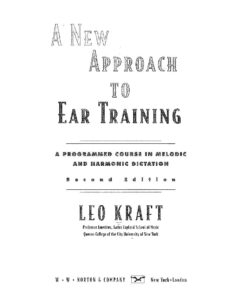 |
|
| A New Approach To Piano Technique (By Ruth A. Dickerson) (1962) |
 |
A new approach to piano technique |
| A Night In Tunisia – Dizzy Gillespie.mscz | ||
| A Pedal Method For The Piano (By Albert F Venino) (1893) |
 |
|
| A Popular Account Of Ancient Musical Instruments And Their Development by William Lynd (Book 1897) |
 |
|
| A Rockin’ Christmas Piano Vocal Guitar |
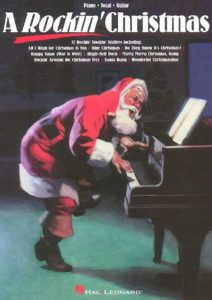 |
A Rockin’ Christmas Piano Vocal Guitar Contents — Rockin Christmas |
| A Single Man – George’s Waltz (Shigeru Umebayashi) | ||
| A Single Man – Stillness of the Mind (Abel Korzeniowski) | ||
| A Smooth Jazz Christmas – Mellow Seasonal Favorites for Piano arr. Roger House |
 |
A Smooth Jazz Christmas – Mellow Seasonal Favorites for Piano arr. Roger House |
| A Song For You – Leon Russell Ray Charles (Musescore File).mscz | ||
| A Star Is Born – Always Remember Us This Way Lady Gaga |
 |
|
| A Star Is Born – Shallow Lady Lady Gaga |
 |
|
| A Tale Of Two Sisters Ost – Epilogue Piano Solo |
 |
|
| A Thousand Years – Twilight OST (Christina Perri) | ||
| A Time For Love – Johnny Mandel |
 |
|
| A Time For Us – Guitar TABlature |
 |
|
| A Time For Us (Love Theme from Romeo and Juliet) Nino Rota |
 |
|
| A Time For Us (Romeo and Juliet OST) Nino Rota | ||
| A Touch Of Jazz 14 well-known hymns, gospel songs and contemporary praise songs by Wolaver Bill |
 |
A Touch Of Jazz 14 well-known hymns, gospel songs and contemporary praise songs by Wolaver Bill |
| A Tribute To Ella Fitzgerald Piano Vocal Guitar |
 |
A tribute to ELLA FITZGERALD |
| A Walk To Remember – Only Hope | ||
| A whiter shade of pale – Procul Harum | A whiter shade of pale – Procul Harum | |
| AaRON U-turn Lili Piano |
 |
|
| Ab Ovo – Joep Beving (Musescore File).mscz | ||
| Abba – Abba Gold – Greatest Hits |
 |
ABBA Gold Geatest Hits booksong sheet music |
| Abba – Chiquitita | ||
| Abba – Dancing Queen | ||
| Abba – Fernando | ||
| Abba – I Have A Dream | ||
| Abba – Like An Angel Passing Through My Room | ||
| Abba – Mamma Mia | ||
| Abba – Slipping Through My Fingers | ||
| Abba – Thank You For The Music | Abba-Thank-You-For-The-Music 1st page | |
| ABBA – Thank You For The Music (Piano Vocal Guitar) | ABBA – Thank You For The Music (Piano Vocal Guitar) | |
| ABBA – Thank You For the Music (Piano vocal Guitar) (Musescore File).mscz | ||
| Abba – Thank You For The Music Piano & vocal | Abba – Thank You For The Music-abba-satb | |
| Abba – The Winner Takes It All | ||
| ABBA Dancing Queen Easy Piano Solo |
 |
|
| ABBA Fernando (Piano Solo arr.) |
 |
|
| ABBA Fernando (Piano Solo arr.).mscz | ||
| ABBA Greatest Hits |
 |
ABBA GREATEST HITS SHEET MUSIC BOOK |
| ABBA I Have A Dream |
 |
|
| Abba The Very Best Vol 1 Easy Piano Hans Gunter Heumann Pop Classics For Piano |
 |
Abba The Very Best Vol 1 Easy Piano |
| Abba The Very Best Vol 2 Easy Piano Hans Gunter Heumann Pop Classics For Piano |
 |
Abba The Very Best Vol 2 Easy Piano |
| Abbey Lincoln Songbook |
 |
Abbey Lincoln Songbook |
| Abbey Lincoln Songbook Piano Vocal Guitar Chords |
 |
Abbey Lincoln Songbook Piano Vocal Guitar Chords |
| Abdullah Ibrahim – The Piano World Of |
 |
Abdullah Ibrahim, The Piano World Of |
| Abdullah Ibrahim The African Piano Of Abdullah Ibrahim Vol 1 |
 |
Abdullah Ibrahim The African Piano Of Abdullah Ibrahim Vol 1 |
| Abdullah Ibrahim The Wedding (piano solo transcription sheet music, partition) |
 |
|
| Abel Korzeniowski – Death Is My Heir (from Romeo and Juliet) |
 |
|
| ABRSM Jazz Piano Pieces Grade 1 to 5 |
 |
ABRSM Jazz Piano Pieces Grade 1 to 5 ABRSM Jazz Piano Pieces Grade 5ABRSM Jazz Piano Pieces Grade 5 |
| ABRSM Piano Exam Pieces Grade 1 (2016) |
 |
ABRSM Piano Exam Pieces Grade 1 (2016) |
| ABRSM Piano Scales, Arpeggios Grade 8 |
 |
|
| ABRSM Piano Scales, Arpeggios and broken chords Grade 1 |
 |
|
| ABRSM Piano Scales, Arpeggios and broken chords Grade 4 |
 |
ABRSM Piano Scales, Arpeggios and broken chords Grade 4 |
| ABRSM Piano Scales, Grade 2 A Guide for Students and Teachers | ABRSM Piano Scales, Grade 2 A Guide for Students and Teachers | |
| ABRSM – Time pieces for guitar vol. 1 |
 |
|
| ABRSM – Time pieces for guitar vol. 2 |
 |
|
| ABRSM 2017 18 Piano Exam Pieces Grade 1 |
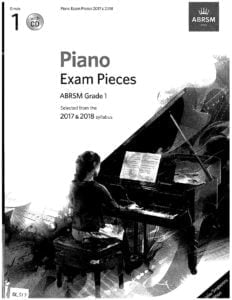 |
ABRSM 2017 18 Piano Exam Pieces Grade 1 |
| ABRSM 2017 18 Piano Exam Pieces Grade 2 |
 |
ABRSM 2017 18 Piano Exam Pieces Grade 2 |
| ABRSM 2017 18 Piano Exam Pieces Grade 3 |
 |
|
| ABRSM 2017 18 Piano Exam Pieces Grade 4 |
 |
|
| ABRSM 2017 18 Piano Exam Pieces Grade 5 |
 |
|
| ABRSM 2017 18 Piano Exam Pieces Grade 6 |
 |
|
| ABRSM 2017 18 Piano Exam Pieces Grade 7 |
 |
|
| ABRSM 2017 18 Piano Exam Pieces Grade 8 |
 |
|
| ABRSM 2021-2022 Piano Exam Pieces Grade 1 |
 |
|
| ABRSM 2021-2022 Piano Exam Pieces Grade 2 |
 |
|
| ABRSM 2021-2022 Piano Exam Pieces Grade 3 |
 |
|
| ABRSM 2021-2022 Piano Exam Pieces Grade 5 |
 |
|
| ABRSM 2021-2022 Piano Exam Pieces Grade 6 |
 |
|
| ABRSM 2021-2022 Piano Exam Pieces Grade 8 |
 |
|
| ABRSM 2021-2022 Piano Exam Pieces Initial Grade |
 |
ABRSM 2021-2022 Piano Exam Pieces Initial Grade |
| ABRSM Aural Training In Practice Book 1 Grades 1 to 3 |
 |
|
| ABRSM Aural Training In Practice Book 2 Grades 4 and 5 |
 |
|
| ABRSM Discovering Music Theory (Complete) Grades 1 to 5 Workbook by Simon Rushby (2020 Exams) |
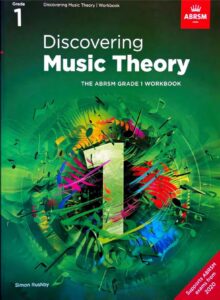 |
ABRSM Discovering Music Theory (Complete) Grades 1 to 5 Workbook by Simon Rushby (2020 Exams) contents |
| ABRSM Erster Verlust Grade 4 ABRSM Piano Exam Pieces 2021 & 2022 |
 |
|
| ABRSM Etude In A Minor – Dmitry Kabalevsky ABRSM Grade 4 Piano Exam Pieces 2021 & 2022 |
 |
|
| ABRSM Grade 2 – Inter-City Stomp byChristopher Norton From Microjazz Collection (Sheet Music) |
 |
|
| ABRSM Initial Grade Piano Exam Pieces 2023 2024 |
 |
|
| ABRSM Minuet and Trio D 41 No 21 – Franz Schubert ABRSM Grade 4 Piano Exam Pieces 2021 & 2022 |
 |
|
| ABRSM More Music Theory Sample Papers Grade 5 For New Format |
 |
|
| ABRSM Music Theory In Practice, Grade 1 (Eric Taylor) |
 |
|
| ABRSM Music Theory In Practice, Grade 2 (Eric Taylor) |
 |
|
| ABRSM Music Theory Past Papers Grade 1 2004 |
 |
|
| ABRSM Music Theory Past Papers Grade 4 2016 |
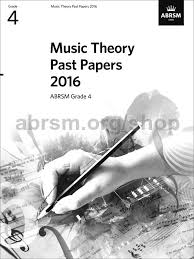 |
|
| ABRSM Music Theory Past Papers Grade 5 2012 |
 |
|
| ABRSM Music Theory Past Papers Grade 6 2013 |
 |
|
| ABRSM Nikki Iles Danny Boy ABRSM Piano Exam Grade 8 2023 Jazz Piano arr. inspired by Bill Evans |
 |
|
| ABRSM Nikki Iles Friends Book 1 Intermediate Jazz Pieces For Piano |
 |
ABRSM Nikki Iles Friends Book 1 Intermediate Jazz Pieces For Piano |
| ABRSM Nikki Iles Friends Book 2 Intermediate To Advanced Jazz Pieces For Piano |
 |
ABRSM Nikki Iles Friends Book 2 Intermediate To Advanced Jazz Pieces For Piano |
| ABRSM Nikki Iles The Elephant Parade ABRSM piano Exam |
 |
|
| ABRSM Piano 2025-2026 Grade 8 C3 A Nightingale Sang in Berkeley Square by Sherwin – Maschwitz |
 |
|
| ABRSM Piano Exam 2007-2008 Grade 3 |
 |
|
| ABRSM Piano Exam 2015-16 Grade 3 |
 |
ABRSM Piano Exam 2015-16 Grade 3 |
Introduction
Composing is the highest calling for a musician. Performing, whether it be interpreting or improvising, always takes second place. The musician in the 20th century, compared to one in the 16th century, is in a unique position; at his disposal are the great compositions of the past 400 years.
The inheritance is prodigious. Bach didn’t have Mozart or Beethoven; Mozart and Beethoven didn’t have Brahms or Schumann; Schumann and Brahms didn’t have Schoenberg, Berg, Webern, Boulez, Stockhausen, Carter, Bernstein, Gershwin, Copland, Barber, Ellington, or Bill Evans.
Jazz music is a players’ (improvisers’) art. The written or composed parts used in jazz performances are always subservient to the solo (improvised) sections. The Herman Herds are memorable because of the soloists (improvisers). Stan Getz’s solo on “Early Autumn” will far outlast the song itself, as will Lester Young’s solos with the Basie band, Ben Webster with Duke, Earl Hines, and Charlie Parker. Jazz is most exciting and exhilarating when played by a soloist, or in a duo, trio, quartet, or quintet setting.
Please, subscribe to our Library.
If you are already a subscriber, please, check our NEW SCORES’ page every month for new sheet music. THANK YOU!
In order to fully develop as an improviser, the jazz musician, like the classical musician, must also play in large ensembles. But the real commitment and challenge that faces the jazz player comes when he is alone with his instrument. He must sit (or stand) with that instrument and improvise hour after hour, day after day, year after year, with NO LET UP!
He or she must be convinced that there will always be a deeper level of creativity that has not yet been tapped. He or she must have the faith of Saints that these deeper levels will be reached, sometimes by leaps but mostly in upward spirals. He or she must sense, feel, and visualize a light shining inside the body and mind that grows ever brighter as each new level is mastered; and only when that light completely engulfs one during a performance will he or she know the meaning of Joy: a joy beyond description, one that will be felt by all, and that Joy shall be called MAGIC.
Bill Evans had Magic. He was a Magician on the highest plane of consciousness. He knew all music; all 400 years. He chose to-develop and express his Magic through the art of jazz improvisation. He made a name for himself both as a soloist and with his trio.
Bill Evans was an interpreter of the American popular song. His improvisations were based on the Blues, Song Form, and Free Form structures. Historians and musicians have already acknowledged him as one of jazz’s great innovators, but it may be a while before they rank him as one of America’s great jazz composers.
The purpose of these analytical essays on Evans’ compositions, including his standard repertoire, is threefold:
- to give the jazz musician and the enlightened public insight into the compositional process;
- to inspire jazz musicians and the enlightened public to play and learn his music; and
- to reveal the depth and richness of his compositions, for they are organic, and therefore complete. There is absolutely no need to change a note, chord, or rhythm in any of his works. Evans never wrote a tune, a melody, or a riff over someone else’s chord progression. He did not consider that the art of composing. Nor do I.
A composer worthy of the name conceives and hears ideas in his mind’s ear. These ideas will eventually be worked out on manuscript paper. A composer worthy of the name knows how to work these ideas on paper through a complete study of harmony, counterpoint, analysis, compositional forms, arranging, and orchestration.
A composer worthy of the name is constantly developing and cultivating his sensitivity to the inner creative impulses so as to recognize them when they arrive. Then he/ she takes-makes!-the time to think, sketch, write, and experiment on manuscript paper, so the ideas will find outer form. The composer worthy of the name then completes these sketches and experiments info full-blown compositions. A man I nominate, worthy of the name COMPOSER, is Bill Evans.

THE EDUCATION OF THE JAZZ MUSICIAN
by Sean Petrahn
The shelves of all the major book stores house at least one volume devoted to the evolution of jazz, this uniquely American folk phenomenon. I will not attempt, therefore, to create a curriculum that necessarily complements or parallels the importance and influence of the leading figures of each era in jazz found in the history books. Rather, I shall boil it down to two major talents.
The evolution of jazz from 1890 to 1980 can be summed up in the music of two pianists: Art Tatum and Bill Evans. They are the towering figures who will outlast, historically, the Jelly Roll Mortons, the Duke Ellingtons, the Bud Powells, and even the Lennie Tristanos.
That is to say, in the year 2080, only these two names need be mentioned in a jazz history course, because they were the synthesis of all that came before and all that will ever come after. Both men absorbed the innovations of not only the lesser piano talents (mentioned above), but also of the horn players: the Armstrongs, the Beiderbeckes, the Prezes, the Birds, the Zoots, the Getzs, and the Coltranes, those other interesting yet inevitably lower talents who forged the melodic paths of the jazz improvised line. Art Tatum and, more so, Bill Evans, also absorbed the music of the Western classical world, from Bach to Schoenberg, and any analysis of their styles must bring this to the fore.
What is it that makes jazz different from Western classical music? The answer is deceptively plain and simple. Jazz is almost totally improvised, while classical music is almost totally written down.
Classical music is a composer’s art: even the greatest geniuses and fastestworking composers in history-Johann Sebastian Bach, Wolfgang Amadeus Mozart, Gioacchino Rossini, Franz Schubert, Frederic Chopin, Hector Berlioz, Richard Strauss-took hours, days, or weeks to compose even so much as one minute’s worth of music.
And this is even true of those composers (Bach, Mozart, Chopin) who were known as great improvisers. Very little of their improvisations actually made it into their finished, published works; there was always some finishing or refining process that took place before their’-work went to the publisher.
Jazz, conversely, developed as an improviser’s art. Despite the fact that there have been some very clever jazz composers and arrangers who formulated, in advance, introductions, main themes, bridges, and codas-Morton, Ellington, Eddie Sauter, George Handy, Thelonious Monk, and Charles Mingus spring immediately to mind-the principal interest in a jazz performance is not the pre-arranged formalities, any more than it is in a classical performance.
The central crux of the listening experience is the manner in which themes are interwoven or developed. In classical music, this development is written down, while in jazz, it is improvised. There is no editing when you improvise; there is constant editing when you compose. In jazz, then, it takes exactly one minute to create one minute’s worth of music … and therein lies the excitement, the danger, of playing jazz as opposed to playing classical music.
Despite this difference, there is ( aside from the fact that both utilize Wes tern musical forms and tonalities) one great similarity between the two musics. One learns to compose by imitating the best composers; one learns to improvise by imitating the best jazz improvisers. In other words, the quality of the present in music is always dependent, to some degree, on the quality of the past.
It is implicit in this dictum that one learns how to p lay one’s instrument in a virtuoso manner, before one can imitate Art Tatum or Bill Evans. One must be able to read (play) the masterworks before one can learn composition. In this light what, then, is the proper curriculum for the jazz student? Should there be a curriculum at all? Well, yes and no.
Let’s take a brief comparative historical look at Western music.
Jazz began when classical music had exhausted itself, circa 1910 – 1913; and if we isolate the elements of music (melody, harmony, and rhythm), we can-by comparison, analogy, and metaphor-gain a clearer picture of what I’m saying.
The modal (1100 – 1600 A.D.), tonal (1600 -1900 A.D.), arrd atonal (1900 – present) periods in Western music are arbitrary divisions that define and classify the way composers think, and organize their music. Each period created a synthesis of the previous one, and therefore generated more complex structures and vocabularies. This does not mean that I adhere totally to the Kantian principle of evolution, i.e., that for each new stage or period there is a logical progression into the next, therefore, making it more complex. The motets of Gesualdo (modal period) were more complex than, say, Stravinsky’s Symphony of Psalms (end of the tonal era).
I like to think of each stage in musical evolution not as “progress” but as an unfolding gradually, layer by layer, of the total musical universe. A synthesis does create new problems in form, but also new possibilities.
A composer living today has, indeed, much more to absorb and learn than one who lived in the 16th century, and therefore has greater demands placed on his artistic integrity in order to avoid rewriting the past. At the same time, however, he also has an enormous repertory from which to draw his inspiration. Each composer taps into a layer of the musical universe. The greater the genius, the clearer he translates his vision, and the greater demands he makes on the interpreter and listener.
The jazz improviser is limited by his technique. There is not one fraction of a second hesitation while improvising, otherwise he loses the “flow.” It is a myth to think that an improviser hears internally more than he can play. It’s always the other way around: you only create ideas that can be executed with precision; otherwise, you would stutter and stammer, hopelessly. NO mistakes are made when one improvises this way: mistakes mean that you are not hearing an idea internally. The hand is the medium of the message.
The secret is that you only play what you can conceive in your mind’s ear on the spur of the moment. Then improvising is easy, and technical development becomes the means to a greater end … and that greater end is ease, subtlety and eloquence in your playing.
The jazz curriculum is divided into three stages:
- THE BLUES FORM
- THE SONG FORM
- THE FREE FORM
Each stage parallels the classifications mentioned above-modal, tonal, and atonal-with regard to the evolution of classkal-music. The Blues Form is modal, the Song Form is tonal, and the Free Form is atonal. This may appear an oversimplification, but categories and labels are necessary_when one decides to teach such a vast area of musical thought. I like to think of each stage as paralleling the history of the human race, from instinctive to-intellectual to the stage yet to come, intuitive.
The student of jazz becomes reacquainted with this long process through the Blues Form (Instinctive), i.e. playing from the “gut” or solar plexus center. The Song Form engages the Intellect. This stage is more concerned with structure, key relationships, and harmony. The study of the Free Form (Intuitive) stage always comes last.
The student, at this stage, should be a master improviser, his or her knowledge of the past now sunken into the unconscious mind, its function slightly analogous to a main-frame computer that stores billions of bits of information about a subject and its related topics (and subtopics, and subdivisions of subtopics).
The student must then go through this experience, or rather process, from instinct to intellect to intuition, of improvising at each stage in the curriculum. For example, 1) he must try to improvise on the very basic blues structure-twelve bars, three scales, three chords-and in 4/ 4 meter, totally by instinct, i.e., “feeling his way through,” playing and making up melodies that sound good to him; 2) he must consciously learn and memorize the modes that can be applied to this basic twelve-bar structure, and on which he can experiment. This stage (and every stage) must be accompanied by listening to, and singing along with, the recordings of the improvisers playing the blues.
This is eartraining and must also include the singing of the modes. 3) He must then “feel” and “know” that what was learned and memorized in Step 2 is second nature and fully absorbed by the unconscious. (I agree with Carl Jung that the unconscious mind is just as active, and probably more so than the conscious mind, and therefore continually digesting the information and readying it for use by the intuitive mind.) It is, in fact, in the unconscious mind that we develop understanding and wisdom. The sense or feeling of “second nature” cannot be defined, yet one knows it when it “arrives.”
And you know it through your playing. At the intuitive level of improvising, one has the feeling that one is NOT doing the playing; that someone else has taken over your mind, and is using YOUR hands to make music.
Bill Evans Master Class by Dave Frank

